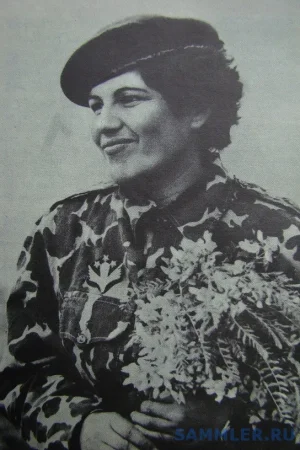ya, how was Su pulling the country out of the Middle Ages? Um, starting with assassination?
Since the 1950s, the Soviet Union has built thousands of kilometers of highways in Afghanistan. These are, for example, the Kushka - Herat - Kandahar highway with a length of 679 kilometers, Doshi - Shirkhan - 216 kilometers, Puli - Khumri - Mazari - Sheriff - Shibergan - 329 kilometers.
Perhaps the most iconic vehicle built by the Soviet forces is the Salang highway with the tunnel of the same name, which runs through a mountain range at an altitude of over 3,000 meters. Until 1973, it was considered the longest in the world (3.6 kilometers). The construction of the tunnel was carried out by Moscow metro builders. In 1997, during the civil war, "Salang" was blown up, traffic on it was restored only five years later.
In 1960, the Jangalak car repair plant was built in Kabul, capable of performing more than 1,300 major car repairs per year, as well as producing 750 tons of metal products per year (machine tools, pumps, road construction equipment).
In the Afghan capital, with the support of the USSR, in 1985, motor transport enterprises were put into operation (the total production capacity is 900 KamAZ vehicles per year), and an enterprise for servicing fuel trucks. In 1984, a KamAZ service station appeared in Hairaton.
With the assistance of the Soviet Union, the energy industry of Afghanistan was actively developing: a map of the location of minerals was prepared, on which there were about 1.5 thousand deposits. The USSR built eight oil depots (total capacity - 8.3 thousand cubic meters), a gas pipeline with a throughput capacity of 4 billion cubic meters of gas per year.
Hydroelectric power plants were also built: in Naglu (with a capacity of 100 thousand kW), Puli-Khumri (9 thousand kW). When there was not enough electricity, the Soviet Union exported it from its territory: for this purpose, power lines were built from the border of Shirkhan to Kunduz and the power line "USSR state border - Mazar-i-Sharif".
In the 1960s, Soviet specialists built another strategic facility in Kabul: a polytechnic university for 1,200 students. For the implementation of this project, the USSR spent an impressive amount at that time: more than 6 million rubles.
Today, Kabul Polytechnic University is Afghanistan's leading technical university. Construction, electromechanical, geological, automotive and other faculties have been opened here, where 4000 students study.
It is interesting that this is the only educational institution in the country where the main foreign language is Russian.
During the war, a bomb hit the library of the Polytechnic University, some of the books burned down, and some were stolen. Now the university is experiencing difficulties with manuals: a few years ago, the rector, Izatulla Abed, admitted that they had to use old Soviet textbooks.
The USSR also tried to develop the agricultural industry in Afghanistan. In 1957, the Land of Soviets built a bakery for its Asian ally, producing 70 tons of bakery products per day. The enterprise, located in Kabul, was equipped with two mills, grinding 375 tons of grain per day, the capacity of the elevator was 50 thousand tons of grain.
More than 20 years later, another bakery was opened in Kabul, with a capacity of 65 tons of products per day.
In Mazar-i-Sharif, with the participation of Soviet specialists, a mill with a capacity of 60 tons of flour per day, as well as an elevator with a capacity of 20 thousand tons of grain, appeared. The country has also put into operation diversified farms "Khalda" and "Gazibad".









